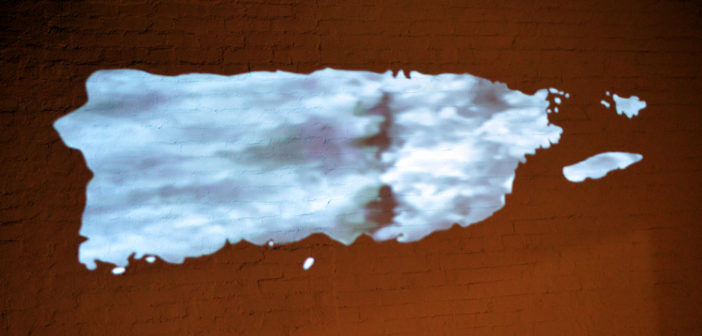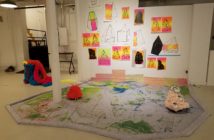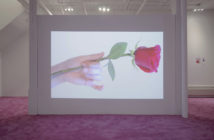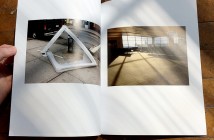Many didactic art exhibitions refer to events that have already happened, appealing to viewers’ collective memory rather than urging collective action. Not so for ¡CAPICÚ! Let Them Eat Cake, which recently closed at The Distillery Gallery.
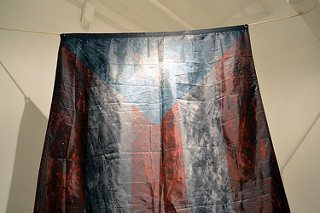
From ¡CAPICÚ! Let Them Eat Cake.
The exhibition, organized by and showcasing work from Shey Rivera Ríos (performance artist, poet, and recently appointed Artistic Director of AS220) and Anabel Vázquez Rodríguez, (curator, visual and performance artist), was an imperative response to the recently passed Puerto Rico Oversight, Management, and Economic Stability Act (PROMESA), signed into law by President Obama this past June. Initially mounted at Expose Gallery in Providence, the show features video, performance, drawings, and large swaths of wall text, conceptually uniting in the curators’ mission to inform viewers of the recent “legislative violence” against the people on the island of Puerto Rico and inspire its protest.
If you have not heard about PROMESA you are not alone. Mainstream media barely covered the bill when it passed into law on June 30th. Created in an effort to pay back the U.S. territory’s 72 billion dollar debt, President Obama has explained that PROMESA, which means “promise” in Spanish, is designed to provide "more stability, better services, and greater prosperity over the long term for the people of Puerto Rico.” But even prior to its passing, the bill was not without its critics in the U.S. Senate and among Puerto Rican officials and citizens, as it establishes a Fiscal Control Board, whose powers to redistribute Puerto Rico’s funds are virtually unchecked. The expenses of the FCB lay on the shoulders of the territory’s citizens. Prioritizing economic concerns over the needs of the people, the act directly affects the lives of Puerto Rican citizens, including an incoming lowering of minimum wage for employees under 25 to $4.25 an hour. PROMESA continues the turbulent history of United States rule of the territory, dating back to the estado libre asociado status that was enacted in 1950, which nationalists saw as a continuation of the commonwealth’s colonization.
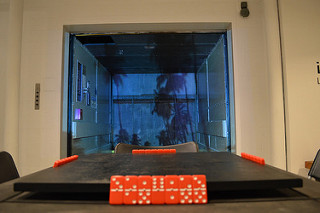
From ¡CAPICÚ! Let Them Eat Cake.
Rivera Ríos and Vázquez Rodríguez see ¡CAPICÚ! as an opportunity to bring awareness to the bill’s relative invisibility. Both curators have worked to contribute toward social change in Puerto Rico via the arts. and understand the exhibition as an extension of their practices in performance and community engagement.
Walking into the Distillery Gallery, one is immediately struck by the flicker of appropriated, black and white footage from the mid-century; one piece on a monitor and the other a projection in the shape of the island onto the gallery walls.
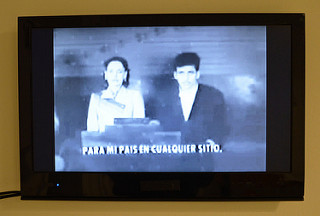
From ¡CAPICÚ! Let Them Eat Cake.
The videos I am not sorry, and Bizcocho, orient the viewer toward this history. I am not sorry appropriates haunting film of Nationalists Lolita Lebrón and Rafael Cancel Miranda unapologetically defending their attacks on the U.S. House of Representatives in 1954 and Bizcocho (Spanish for cake), loops an ad for Pillsbury cake from the same decade, a typical image of American excess and greed and a nod to the exhibition’s title.
The rest of the exhibition is black and white as well, monotone in color and, to some extent, in mood. A whimsical image of palm trees is projected into an empty elevator shaft (Portal A La Orilla). A Puerto Rican flag darkened by soot, Bandera Noir, echoes a military map of the island, Puerto Rico Noir. At the center of the gallery, a black table for playing dominos is flanked with chairs to spark conversation through play. During regular hours the empty chairs suggest a stillness or absence of play and communication, but at the exhibition’s opening, the table served as the center for conversation. Rivera Ríos and Vázquez Rodríguez used the table as a performative platform, sharing updated information on the bill as they competed against each other.
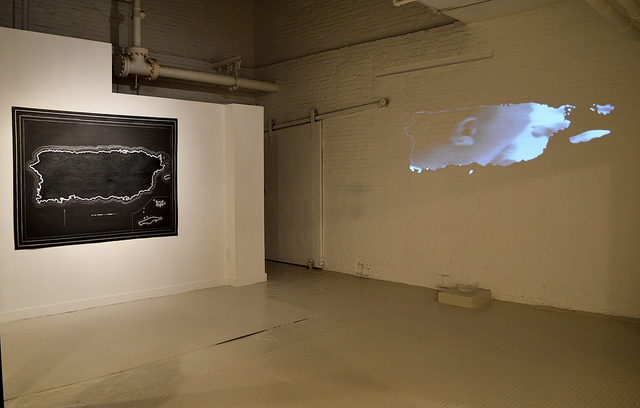
From ¡CAPICÚ! Let Them Eat Cake.
The design of the exhibition in both venues is to privilege the immediate and unsubtle conveyance of information. In other words, ¡CAPICÚ! is a vehicle for a larger message, an occasion for didacticism at its most urgent. Amidst the simple print-outs of the bill and its latest implications are hung on walls, the copy-shop quality of the information only adding to its sense of immediacy. The minimal color scheme and relative heavy-handed symbolism of the artwork on display does not feel flat given the sheer volume of information that Rivera Ríos and Vázquez Rodríguez have taken upon themselves to present.
Efforts to helm resistance to PROMESA continue beyond the exhibition. Concertacion, (The Coalition), consists of 200 organizations united against the FCB, cooperating with the common goal of guiding and educating people about the act’s implications, and bringing together a diverse group of leaders living on the island and throughout its diaspora. For more information, visits the organization’s Facebook page. Also see Encampment Against the Control Board, an important part of the resistance in Puerto Rico, for more information.

